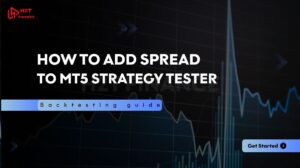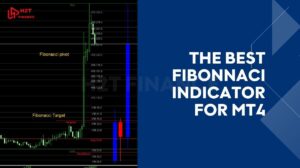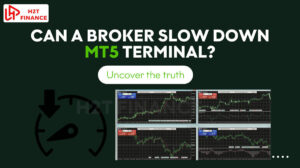A funded trading account is a trading account backed by a third-party firm that provides capital, allowing traders to operate in the market without risking their own money. In other words, if you’ve ever asked yourself what is a funded account in trading, it refers to this low-risk model where you trade with firm-provided capital under strict evaluation criteria.
For investors looking to scale their forex journey without the anxiety of personal loss, understanding what is a funded trading account can unlock new pathways. In this article, you’ll discover not just the definition, but how these accounts function, who should use them, and how they differ from self-funded accounts. This guide will give you actionable insights to leverage this opportunity in 2025.
Key takeaways:
- A funded trading account lets traders use capital from a prop firm, reducing personal financial risk.
- Most firms require passing a challenge–verification–funding process before granting live capital.
- Advantages include low risk, high capital access, professional coaching, and structured trading environments.
- Limitations include rule restrictions, profit sharing, and strict risk management requirements.
- Funded accounts differ from personal live accounts mainly in capital access, risk exposure, and freedom of strategy.
- Choosing the right prop firm requires reviewing profit splits, payout policies, reset options, and supported markets.
- Success depends on discipline, consistency, and risk management—more than high returns.
- Funded trading accounts are best for traders seeking growth opportunities without large personal investment.
1. What is a funded trading account? Partnering with a prop firm on your forex trading journey
In essence, a funded trading account is a trading account supported by capital from a proprietary trading firm, commonly referred to as a "prop firm." If you're wondering what is a funded account in day trading, this setup allows active intraday traders to access large capital without putting their own funds at stake.
Instead of depositing your own funds, the prop firm fronts you with trading capital, which often ranges from $25,000 to $150,000 or more.
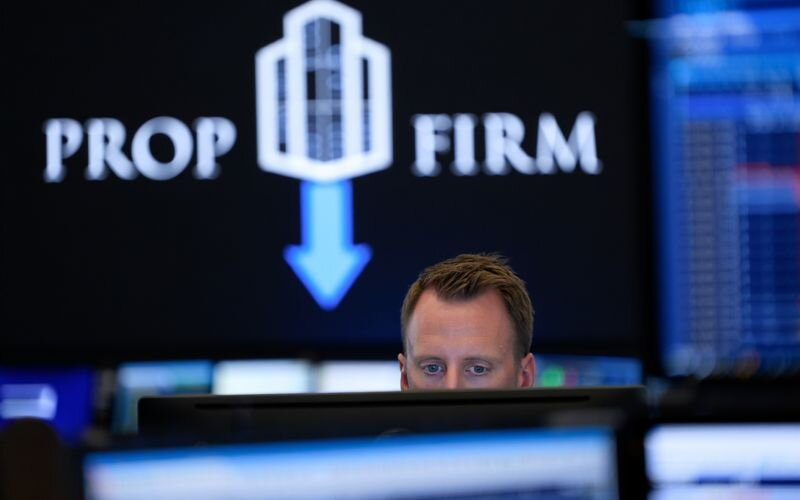
Imagine this: You're confident in your forex skills but lack the funds to test your edge in real markets. A prop firm gives you access to their capital under a specific agreement, usually including a profit-sharing model, trading rules, and risk management criteria.
If you profit, they share a portion with you. If you lose, you’re not financially liable for the losses (as long as you stay within their predefined limits).
This arrangement allows traders to "simulate" high-stakes trading without personal risk. You gain access to capital, platforms like MetaTrader or TradingView, and in some cases, professional coaching and resources.
Understanding what is a funded trading account is key to appreciating its benefits. These accounts are designed not only to accelerate your career but to help prop firms identify traders who can responsibly manage large positions.
A funded account is sometimes called a trading account with external capital or a performance-backed account. And while it might sound too good to be true, when managed responsibly, it can be a sustainable and rewarding path in modern trading.
2. How do funded trading accounts work? What is the main purpose of a funded trading account?
Most funded trading accounts operate through a challenge-evaluation-funding process. Here's a step-by-step breakdown based on real-world experience:
- The Challenge Phase: This is the entry point. Traders must prove their strategy and discipline by trading on a demo account that mimics real-market conditions. You’re given objectives, typically a target profit (e.g., 8-10%), a max drawdown (e.g., 5-10%), and a time limit.
- Verification Phase: If you pass the challenge, you enter verification. This phase confirms consistency. The profit target may be slightly reduced, but the goal remains: prove your skills aren’t based on luck.
- Funding & Live Account: Upon successful completion, you receive a funded account. Now you're trading live capital, backed by the firm. Any profits are shared between you and the firm. Payout ratios range from 70% to 90% depending on performance.
- Ongoing Monitoring: The prop firm provides in-built risk management tools. They monitor your trades for rule compliance and performance stability. Some even offer scaling programs, increasing your capital allocation as you grow.
The ultimate goal? What is a funded trading account ultimately about? It's about giving skilled traders the chance to generate income without requiring personal upfront investment. And for prop firms, it’s a smart way to grow their capital through human talent.
See more useful articles:
- What does NFP stand for? Definition and why it matters in finance – Expert’s insight
- Forex Market Structure: Patterns, Tools & How to Read It
- What is a pip in forex trading? Understanding the basics for traders
3. Why should investors consider having a funded trading account? Pros and cons of a funded trading account
If you're weighing whether to jump into the world of prop trading, understanding the real-life benefits and limitations of what is a funded trading account is essential. Based on my own journey and from working with over a dozen funded traders, here’s what you can realistically expect:
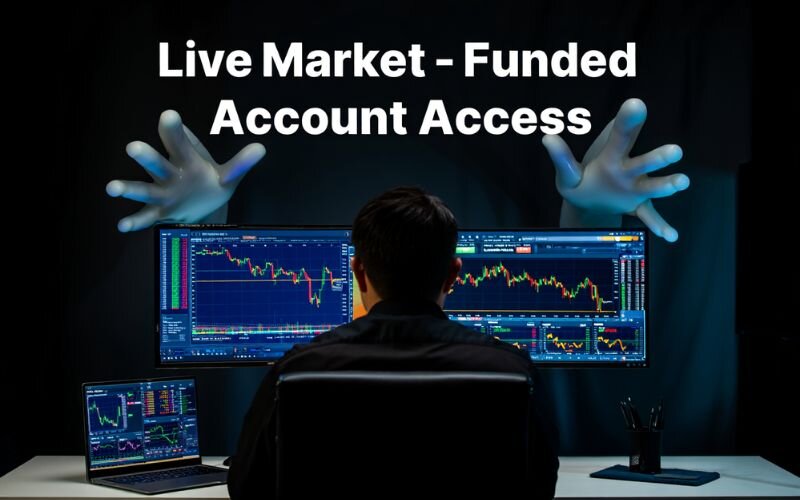
Advantages:
- Low Personal Risk: You’re trading with someone else’s money. That means you preserve your own capital and can experiment with high-leverage setups, knowing that built-in risk limits are there to protect the account.
- Increased Capital Access: Prop firms allow you to work with capital amounts you may never reach with your own savings. Even $100 in skill and discipline can unlock a $50,000 trading account.
- Professional Development: Many firms offer performance reviews, analytical tools, and even 1-on-1 mentoring. This structured environment mimics institutional setups, helping you build habits for long-term success.
- Structured Trading Environment: Strict rules aren’t just for control, they foster real discipline. Knowing there’s a 5% daily loss cap trains your decision-making under pressure.
- Flexible Entry: There's no need to come from a Wall Street background or have a six-figure bank account. If you pass the evaluation, you earn the seat. It's that meritocratic.
Disadvantages:
- Challenge Requirement: Not everyone passes on the first attempt. These challenges test not only your strategy but also your ability to manage emotions, especially under time limits.
- Profit Sharing: If you make $5,000 and the firm takes 20%, that’s $1,000 gone. But remember, without them, you'd have had no capital to make that trade.
- Rule Enforcement: Mistakes can be costly. One careless oversized trade or ignoring stop-losses could mean losing access to your account altogether.
- Limited Freedom: Many firms ban trading around major news events, restrict holding trades overnight, or require minimum trading days. If you're a high-frequency scalper or news trader, this could limit your edge.
Ultimately, a funded trading account offers a risk-mitigated path to real market experience with scalable potential. If you’re willing to trade within a rule-based system and value long-term growth over short-term gains, this model is one of the most effective ways to break into the professional trading world.
4. The difference between a funded trading account and a personal live account
Before deciding which trading route best suits your needs, it’s crucial to understand what is a funded trading account compares to a personal live account. Both offer distinct advantages and limitations depending on your trading goals, capital availability, and risk tolerance. The table below outlines the key differences to help you make an informed choice:
| Criteria | Funded Trading Account | Personal Live Account |
|---|---|---|
| Capital Access | Provided by prop firm (e.g., $25K - $200K) | Trader uses own funds |
| Personal Risk | Minimal – losses absorbed by firm (within limits) | High – personal money is on the line |
| Profit Sharing | Yes – 10% to 30% goes to firm | No – 100% of profits belong to trader |
| Leverage Control | Fixed by firm, usually moderate | Flexible – depends on broker and trader's preference |
| Risk Management Rules | Enforced by firm: drawdown limits, daily loss caps | Trader sets own risk rules |
| Strategy Restrictions | May exist (e.g., no news trading, no weekend holds) | Full freedom |
| Tools & Resources | Often included: coaching, dashboards, simulators | Dependent on trader’s setup |
| Account Termination Risk | High if you break rules | Controlled by trader |
Choosing between the two depends on your capital, discipline, and goals. Funded trading suits those looking for opportunity without capital constraints, while personal accounts reward independence and full control.
5. What is a funded trading account that aligns with your personal forex trading journey?
Every trader has a unique journey, shaped by their strategies, risk tolerance, and trading goals. That’s why not all funded accounts are created equal. To find the right fit, it’s crucial to look beyond the marketing and evaluate key features that determine the success and flexibility of your trading experience.

- Support and Resources Reliable support can be a game-changer. Prop firms that offer trading coaches, performance reviews, and an active support team create an environment where traders can truly develop. Whether you're a novice or seasoned trader, access to guidance makes a significant difference.
- Payout Structure When reviewing prop firms, pay close attention to how profits are shared and how quickly they're paid out. Ideally, you want a provider that offers weekly or bi-weekly payouts with transparent rules and high profit-split ratios (80–95%).
- Account Resets Everyone makes mistakes. A top-tier prop firm should offer easy or affordable reset options to give traders a second shot without unnecessary penalties or red tape.
- Deposit Requirements You shouldn't have to invest a fortune to prove your trading skills. Low entry costs reflect a firm’s focus on talent over capital, making it easier for skilled individuals to get started.
- Tradeable Assets Not all firms offer the same instruments. Make sure the one you choose supports the markets you trade, whether it's forex, indices, crypto, or even stocks and commodities.
In short, understanding what is a funded account trading is the first step to choosing the right setup — one that should support your growth, protect your downside, and provide a professional yet flexible environment to scale your trading journey.
6. How can investors obtain a funded trading account?
To get started, investors first need to understand what is a funded trading account and how to get a funded trading account. This involves choosing a reliable prop firm, meeting their evaluation standards, and ensuring the model aligns with your trading style, risk tolerance, and long-term goals.
6.1. Choosing the right prop firm: Overview of the top 10 best prop firms for investors, updated for 2025
With numerous funded account providers in the market, it can be difficult to choose the right one. Each firm offers unique perks, from generous profit splits to multiple trading platforms and account sizes. To make the decision easier, here’s a comparative overview of the top prop firms heading into 2025.
| Prop Firm | Score | Challenge Types | Platforms | Profit Payout | Pros | Cons |
|---|---|---|---|---|---|---|
| FundedNext | 92 | One Step, Two Step | MT4, MT5, cTrader, Match-Trader | Up to 95% | High payout potential, flexible models, refund bonus | No stock trading, strict risk rules |
| BrightFunded | 95 | Two Step | cTrader, DXtrade | 80% – 100% | Loyalty rewards, fast payouts, scalability | Higher costs for extras, limited platform options |
| FXIFY | 83 | Instant, Lightning, One/Two/Three Step | MT4, MT5, DXTrade, TradingView | Up to 90% | Wide range of challenges, EA and news trading allowed | Limited education, slow top-tier payouts |
| Blueberry Funded | 93 | One Step, Two Step, Rapid, Stock | MT4, MT5, DXTrade, TradeLocker | 80% – 90% | Broker-backed, low-cost entry, diverse assets | News trade restrictions, no true instant funding |
| City Traders Imperium (CTI) | 72 | Instant, One Step, Two Step | MT5, MatchTrader | 80% – 100% | Offers trader salaries, strong support, long-term growth | Mandatory stop-loss, higher fees |
| FTMO | 83 | Two Step | MT4, MT5, cTrader, DXTrade | 80% – 90% | Top-tier reputation, equities access, smart scaling | No loyalty perks, expensive for advanced accounts |
| Seacrest Funded | 65 | One Step, Two Step | MT5, MatchTrader, cTrader, DXTrade | 80% – 90% | Flexible timeframes, upgradeable splits | Lower leverage, delayed withdrawals |
| ThinkCapital | 91 | One Step, Two Step, Three Step | MT5, ThinkTrader, TradingView | Up to 90% | High leverage, budget-friendly, quick setup | Daily drawdown rules, paid upgrades for extras |
| IC Funded | 90 | Two Step | MT4, MT5, cTrader | 75% – 80% | Low spread accounts, linked to top broker | No high-frequency trading, capped funding |
| The 5%ers | 80 | Instant, One Step, Two Step | MT5, MatchTrader | 80% – 100% | Flexible funding, generous profit splits, news trading allowed | Premium fees, complex cost structure |
This side-by-side comparison is a powerful starting point. Each trader should evaluate based on personal goals, whether you're after the highest split, the fastest payouts, or platform compatibility.
Take your time and test with a small account if needed before committing long-term, especially if you’re still figuring out what is a funded trading account and how it aligns with your trading style.
6.2. Completing a prop firm challenge and the required steps
Once you’ve selected a prop firm, the next step is passing their evaluation, also known as the “challenge.” Here’s how it works:
- Understand the Rules: Read their terms carefully. Know the profit target, max drawdown, daily limits, and time restrictions.
- Take the Challenge: You’ll trade on a virtual (demo) account and must hit a specific profit target, usually around 10%, without breaking rules.
- Stay Within Limits: Avoid behaviors like trading without stop-losses or exceeding daily drawdowns. One violation can lead to disqualification.
- Verification Process: Once you hit the goal, your trades will be reviewed. Most firms complete this in 24–72 hours.
- Get Funded: If verified, you’ll receive login credentials to your funded account. Now you can trade real capital and earn a share of the profits.
Consistency and risk management are more important than hitting high returns fast. That’s what firms look for when evaluating whether a trader is truly ready for what is a funded trading account and the responsibilities that come with it.
6.3. Pro tips to successfully pass the prop firm challenge like an expert
Here are battle-tested insights that helped me and my network of traders earn funded accounts:

- Be Prepared: Before starting, test your strategy in demo conditions. Make sure it aligns with the prop firm’s rules.
- Stay Informed: Monitor economic news and global events that might spike volatility, especially around central bank announcements.
- Risk Management First: Set a fixed percentage of risk per trade (e.g., 0.5–1%). Use stop-loss orders religiously.
- Avoid Overtrading: Prop firms value consistent performance. Two good trades a week are better than ten reckless ones.
- Track Everything: Keep a journal of your entries, exits, reasoning, and emotions. Review this after each session.
Passing a prop firm challenge is not about “winning big”, it’s about showing you can follow rules, protect capital, and grow slowly. That’s the real path to long-term success in the world of funded account trading.
7. FAQs: Common questions when searching for what is a funded trading account
7.1. What is a 100k funded trading account?
A 100k funded trading account means a prop firm provides $100,000 capital for you to trade, letting you grow profits without risking your own money.
7.2. What is a funded account in day trading?
In day trading, a funded account lets you use a firm’s capital to trade intraday with set rules, helping you build skills and scale without personal risk.
7.3. What happens if I lose money on a funded account?
If you stay within the firm’s drawdown limits, losses are absorbed by the prop firm. You won’t lose your own capital unless you break rules.
7.4. How much profit can I keep from a funded trading account?
Profit splits vary, typically between 70% and 90% in your favor, depending on the firm and your performance consistency.
7.5. Do I have to pay for a funded trading account?
Some prop firms require an upfront fee to start their evaluation process, while others offer free challenges and earn revenue through profit sharing. It’s important to research each firm’s model to find what fits your budget and goals.
7.6. Is trading with a funded account worth it?
Yes, for disciplined traders it can be highly rewarding. You gain access to large capital without risking your own money, but success depends on consistency and risk management.
7.7. What are the disadvantages of funded accounts?
The main drawbacks are strict rules, profit sharing, limited trading freedom, and the challenge phase that can be difficult to pass.
7.8. What if I lose money on a funded account?
As long as you respect the risk rules, the firm absorbs the losses. If you breach drawdowns or other limits, your account may be terminated.
7.9. How much can I make with a 25k funded account?
Earnings vary by strategy and profit split. For example, if you generate a 10% gain ($2,500) and keep 80%, you’d take home $2,000.
Read more:
- Forex currency trading hours: What time does the forex market open?
- What is a binary option? How they work & key risks
8. Conclusion: What is a funded trading account, and are you the right fit to use one?
Now that you’ve explored the ins and outs of what is a funded account in forex trading, you’re better equipped to decide if this opportunity fits your trading journey.
Funded accounts let you trade with a firm’s capital, meaning less personal risk and more potential to grow. We’ve walked through how these accounts work, what firms to consider in 2025, and exactly how to pass a prop firm challenge.
The real benefit? You don’t need to risk thousands of your own dollars to start trading seriously. If you’re a day trader, speculator, or financial professional, or simply someone ready to take trading more seriously, this could be the most accessible and rewarding way to scale up.
Success in funded trading comes from preparation, discipline, and choosing the right firm. The results can be life-changing if you’re willing to put in the work.
Ready to learn more beside “what is a funded trading account”? Visit our “Forex Basics” section on H2T Finance. You’ll find expert tips, walkthroughs, and practical tools to support your forex trading journey. Your next breakthrough might just start with the right strategy, and a funded account that backs your skill.
